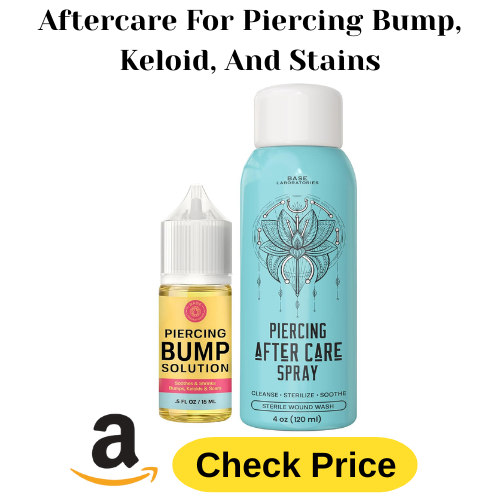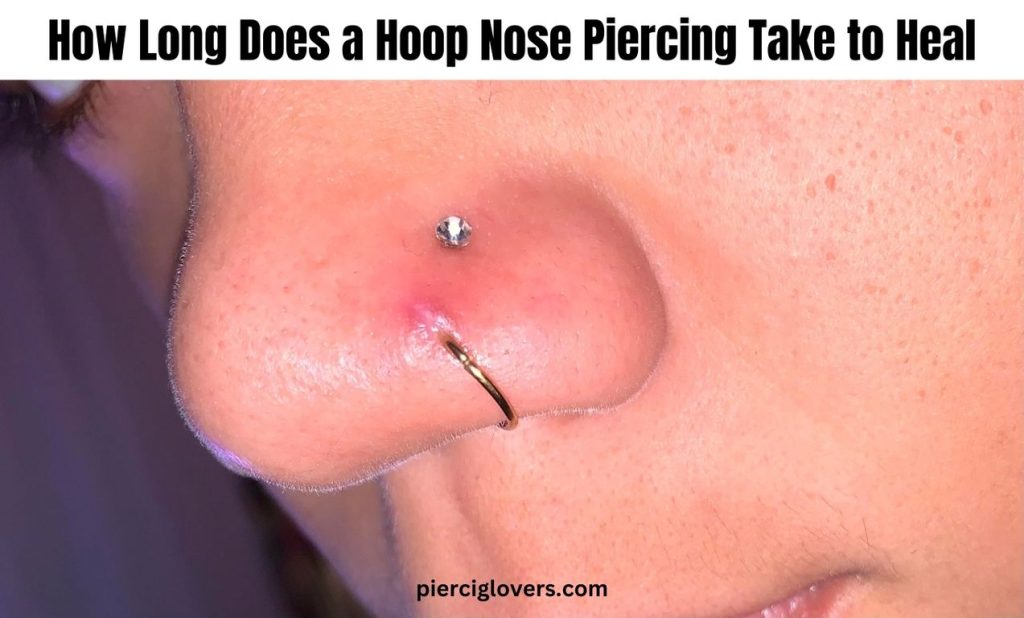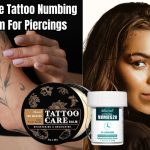A hoop nose piercing typically takes around 6 to 8 months to heal fully. However, the initial healing period, where the piercing starts to feel comfortable, usually lasts about 2 to 3 months. Healing time can vary depending on factors like your aftercare routine, your body’s healing process, and any complications that may arise. It’s essential to follow proper aftercare to avoid infections and promote faster healing. While the piercing may seem healed earlier, it’s crucial to be patient and allow your body enough time to heal completely before changing jewelry.
The Complete Healing Process for a Hoop Nose Piercing
1. Understanding the Healing Timeline
When you get a hoop nose piercing, your body needs time to adjust and heal. Generally, the healing process for a nose piercing with a hoop follows this timeline:
- Initial Healing (2-3 Months): During the first few months, your body focuses on closing the wound created by the piercing. At this stage, the area may still be sensitive, and you might experience some redness or swelling. It’s normal to feel a bit of discomfort, especially when touching or cleaning the piercing.
- Intermediate Healing (3-6 Months): By the third month, the external part of the piercing usually starts to settle down. The redness should subside, and the piercing will feel more comfortable. However, the internal tissue is still healing, so it’s important not to change the jewelry yet.
- Full Healing (6-8 Months): After about 6 to 8 months, the piercing should be fully healed. At this point, you can consider changing the hoop, but it’s best to consult with your piercer before doing so to ensure that the piercing is completely healed.
2. Factors Affecting Healing Time
While the general healing timeline gives you a good idea, several factors can affect how quickly your nose piercing heals:
- Aftercare Routine: Proper aftercare is crucial. Cleaning your piercing with a saline solution twice a day helps prevent infections and keeps the area clean. Avoid using alcohol or hydrogen peroxide, as these can dry out the skin and delay healing.
- Personal Health: Your overall health and immune system play a big role in how quickly your body heals. Eating a balanced diet, staying hydrated, and avoiding stress can all contribute to faster healing.
- Type of Jewelry: Hoops can sometimes move around more than studs, which might cause irritation if not handled carefully. Opt for high-quality, hypoallergenic jewelry to minimize the risk of reactions or infections.
- Lifestyle Habits: Avoid touching the piercing with dirty hands, and be careful when applying makeup or skincare products near the area. Also, be mindful of activities that might bump or tug at the piercing, like sleeping on that side or participating in contact sports.
3. Signs of Proper Healing and Potential Issues
As your nose piercing heals, it’s important to monitor its progress. Signs of proper healing include:
- Reduced Redness and Swelling: Over time, any initial redness and swelling should decrease.
- Less Discharge: It’s normal to have some clear or pale yellow discharge in the beginning, but this should lessen as the piercing heals.
- Comfortable to Touch: Once healed, the piercing should not cause pain or discomfort when touched gently.
However, if you notice any of the following, you might be dealing with a complication:
- Infection: Signs of infection include increased redness, swelling, pain, and green or yellow discharge with a foul odor.
- Piercing Bumps: These are small bumps that can form around the piercing due to irritation or improper care. They’re usually not serious but can be annoying and unsightly.
If you experience any of these issues, it’s important to consult with your piercer or a healthcare professional. They can guide you on the best course of action to prevent further complications.
4. Tips for a Smooth Healing Process
To ensure your hoop nose piercing heals smoothly, follow these tips:
- Stick to a Consistent Aftercare Routine: Clean the piercing with a saline solution twice daily and avoid touching it unnecessarily.
- Avoid Changing Jewelry Too Soon: Even if the piercing seems healed, changing the hoop too early can cause irritation and delay the healing process.
- Protect the Piercing: Be mindful of activities that might cause trauma to the piercing, like sleeping on your stomach or participating in contact sports.
- Stay Healthy: Eat well, stay hydrated, and manage stress to support your body’s natural healing processes.
5. When to Change Your Hoop
It’s tempting to switch out your hoop for a new style, but patience is key. Only change the jewelry once your piercer confirms that the piercing is fully healed, which is typically around 6 to 8 months. If you change the hoop too soon, you risk irritating the piercing and causing delays in healing or even infections.
Frequently Asked Questions
Q: How long does it take for a hoop nose piercing to heal?
A: A hoop nose piercing typically takes about 6 to 8 months to fully heal. However, the initial healing period, where it starts to feel more comfortable, usually lasts around 2 to 3 months.
Q: Can I change my hoop nose ring before it’s fully healed?
A: It’s recommended to wait until your piercing is fully healed before changing the jewelry, which is usually around 6 to 8 months. Changing the hoop too early can cause irritation or delay the healing process.
Q: What should I avoid during the healing process?
A:During the healing process, avoid touching the piercing with dirty hands, sleeping on the pierced side, using harsh chemicals like alcohol or hydrogen peroxide, and participating in activities that could bump or tug at the piercing.
Q: Is it normal for a hoop nose piercing to be sore or swollen?
A: Yes, it’s normal to experience some soreness, redness, and swelling during the first few weeks after getting a hoop nose piercing. However, if these symptoms worsen or persist, it might be a sign of infection or irritation.
Q: How can I tell if my hoop nose piercing is infected?
A: Signs of infection include increased redness, swelling, pain, warmth around the piercing, and green or yellow discharge with a foul odor. If you notice these symptoms, it’s important to seek advice from a piercer or healthcare professional.
Q: Why does a hoop nose piercing take longer to heal than a stud?
A: Hoops can move around more than studs, which may cause additional irritation and slow down the healing process. This is why it’s important to be extra careful with aftercare if you choose a hoop for your initial piercing.
Q: Can I speed up the healing process for my hoop nose piercing?
A: While you can’t significantly speed up the healing process, you can support it by following a proper aftercare routine, eating a healthy diet, staying hydrated, and avoiding anything that might irritate the piercing.
Q: What should I do if my hoop nose piercing develops a bump?
A: Piercing bumps are common and usually result from irritation or improper aftercare. If you develop a bump, avoid picking at it, and continue cleaning the piercing with a saline solution. If the bump persists, consult with your piercer.
Q: When is it safe to change my hoop nose ring?
A: It’s safe to change your hoop nose ring once the piercing is fully healed, typically after 6 to 8 months. Always consult with your piercer before making the change to ensure the piercing is ready.
Final Words
Healing a hoop nose piercing takes time and care. With the right aftercare routine and by paying attention to your body, you can ensure that your piercing heals properly. Remember, patience is essential. Allow your body the time it needs to heal fully, and soon enough, you’ll be able to enjoy your new piercing with confidence.




